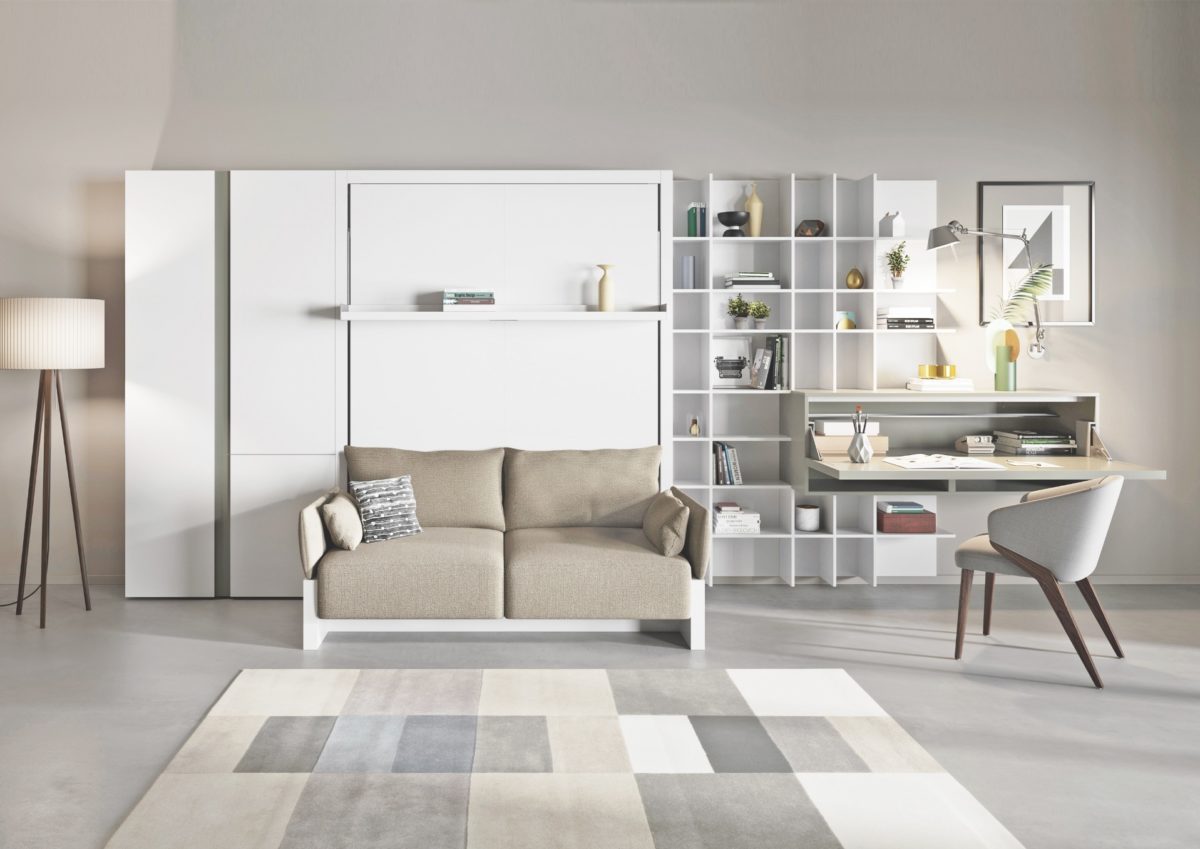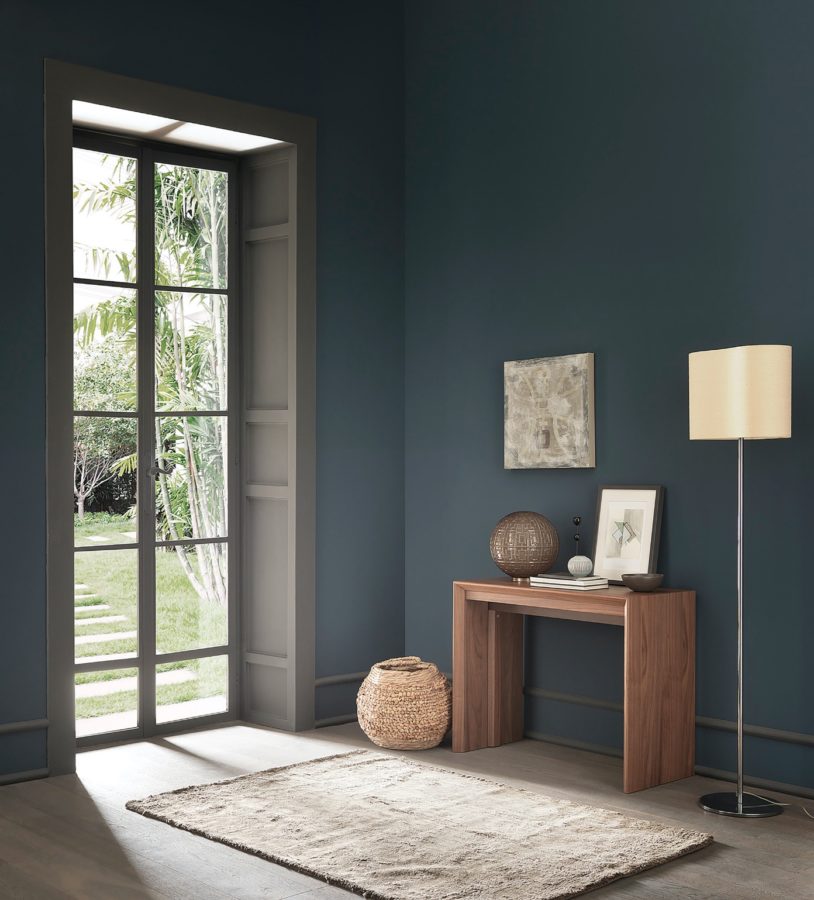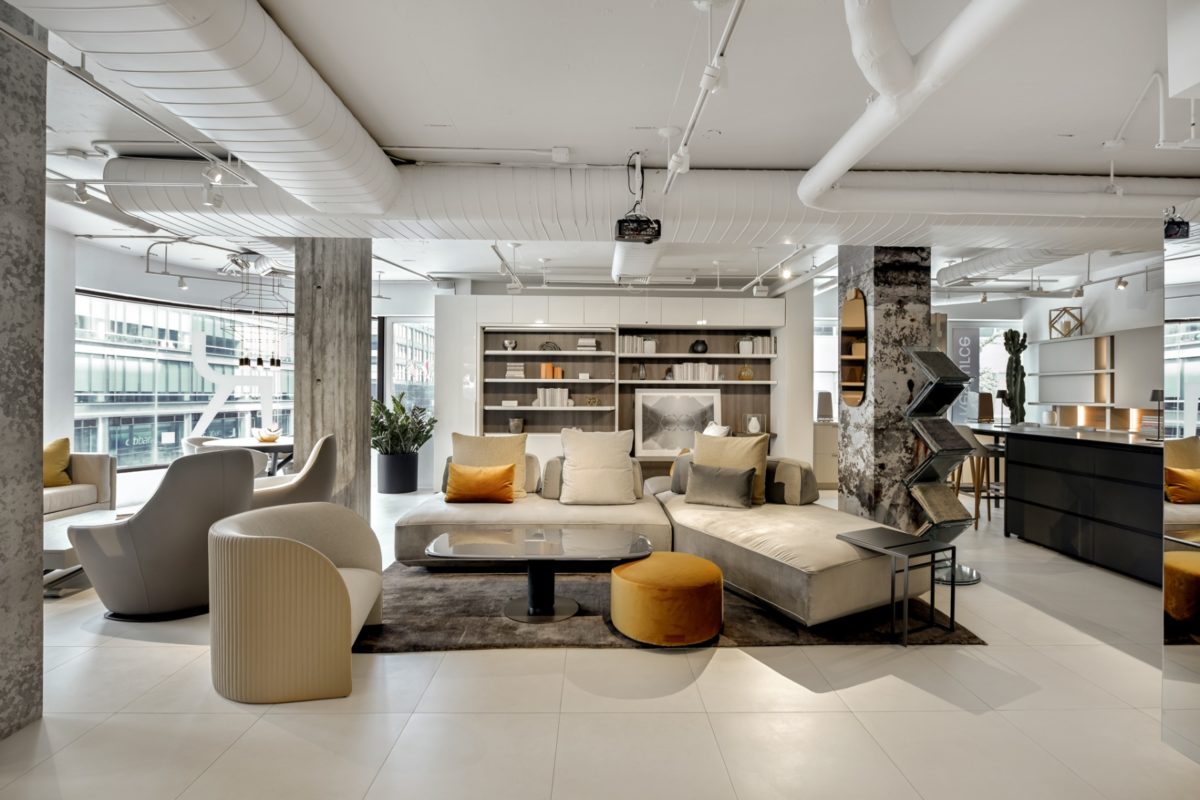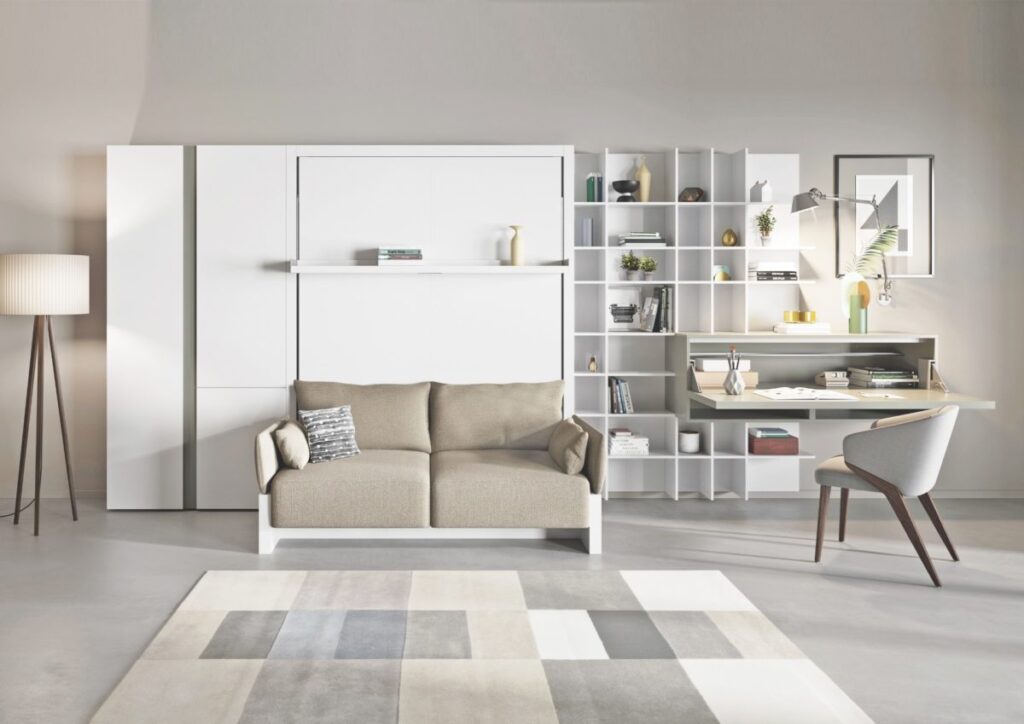For 20 years, Resource Furniture has evolved into a quietly visionary brand based on good ideas that answer the biggest questions related to how we live and work in the built environment. Long before small-space living and multifunctional furnishings were a thing, the company pivoted from a robust catalog business that sold doors, windows, and interior products to the trade, to a company that designed for a series of challenges.
In 2006, they took on the design of a 1,400-square-foot apartment in New York City’s Urban Glass House—architect Philip Johnson’s final project—for a client and her family, complete with all furniture, desks and beds for four children, a home office, a guest room that slept three people, and a large but discreet closet system.

Out of projects like these, Resource came up with a signature of luxe Italian fabrication and minimalist furniture pieces that could disappear into walls or multitask for work, play, and rest. “All the advice that we were given from the industry flew in the face, factually, of what was,” says co-founder Ron Barth. “Everybody needed their space to do more.”
Soon architects, museum directors, urban development leaders, and university professors sought out the company for real-life interiors and high-concept prototypes alike. In 2013, Resource Furniture installed a 325-square-foot micro unit at the Museum of the City of New York that was seen by 150,000 people. In 2017, the company joined forces once more with the Citizens Housing and Planning Council and built a 972-square-foot, three-bedroom unit that Barth says viewers believed to be 1,500 square feet.
Add to this the furnishings for the Future House installation at Chicago’s Museum of Science and Industry, 100 beds designed for an affordable housing project in Hawaii, a collaboration with Oasys prefab homes for the 2019 Los Angeles Design Festival, and on a 422-room, co-living project in Long Island City, New York.

In April 2020, Resource’s iconic Italian Clei Murphy bed was selected by Brad Pitt for a renovation of his makeup artist’s guest house on HGTV’s Celebrity IOU with the Property Brothers. Architect Graham Hill, of the minimalist lifestyle blog LifeEdited and popular TED Talk, has worked with the furniture innovators on all of his interior projects—from designing for a big life in a 355-square-foot Manhattan apartment to a 1,000-square-foot, four-bedroom family house prototype in Maui.
“We’re actually into serving everybody at every level,” says Barth. “The furniture is high quality, made in Italy, and has a lifetime warranty. It offers simple, intuitive solutions to make your space work for you.”
There was a time when Resource Furniture was ahead of its time, when critics believed the owners’ commitment to fusing sustainability and lofty design to be a foolhardy endeavor. As their journey continued, they met the challenges put to them by a discerning clientele. They also met the moment.

Although unforeseen, Resource Furniture was poised for today’s need for domiciles to function as school, office, and entertainment venue. Sales have increased by over 55%, solidifying the company’s commitment to keeping its eight showrooms open. In its anniversary year, Resource launched its Give 2020 campaign, a yearlong initiative to donate to a selection of 20 charities on behalf of every client.
Wall beds, transforming tables, mirrors that fold out to become desks or dining tables, and styles like the sleek Flex sectional—which spreads into a lavish bed when reconfigured—are not only in high demand. As we optimize our homes to experience life day to day in clean-lined rooms, with scads of storage, and free of visual clutter, these forever pieces are a very good idea.





